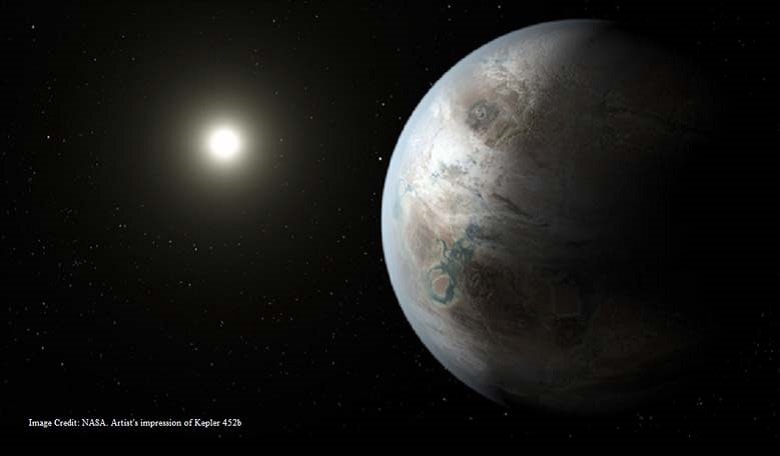Ever since the discovery of Kepler 452b was announced, both searchers and sceptics have had their say on the possibility of Earth making contact with intelligent life.
A potentially “Earth-like” planet out there, which is what Kepler 452b is alleged to be, will obviously generate a more-than-usual amount of discussion on the possibility of discovering life, even intelligent life, elsewhere in the cosmos.
Of course, as Elizabeth Tasker at Gizmodo Australia notes, all we know about Kepler 452b comes from just two data points. Indeed, the probability that Kepler 452b has a rocky surface was estimated to be around 50% to 60%, hardly a slam-dunk. That is just one of the conditions that – based on everything we know so far – would be required for the planet to sustain biological life.
As Rosie Millard wrote in the Independent, the discovery “only [makes] Earth appear more alone than ever.” The planet is 1,400 light years away. Even if there is a tiny chance that it harbours a civilisation, none of the technology we have on hand would allows us to make contact any time soon.
In light of this, Yuri Milner’s generous $100 million donations to scientists on a quest to find a signal generated by alien life in the Milky Way seems like a particularly naive gesture – or does it?
We’ve already written about how the real power of the Kepler 452b discovery is largely symbolic for humanity – an opportunity for self-reflection.
It also gives us a chance to engage in entertaining thought exercises – and just because those thought exercises utilise fictional Star Trek technology doesn’t mean that they should be easily dismissed.
It’s good to remember that just a few hundred years ago, people considering the possibility of circumnavigating the Earth or flying to one’s destination instead of using a donkey cart were liable to get burned at the stake. In light of that, we really just ought to admit that we have no idea where technological progress might take us – or what (or even whom) it could help us find.
And while technological progress continues on its own merry way, people like Milner are on hand to use the technology we already do have – including the power of crowdsourcing massive amounts of data – to keep the search going.
Hollywood, of course, will meanwhile keep us hoping that whatever we do find won’t be anything like a Ridley Scott movie (please?).











